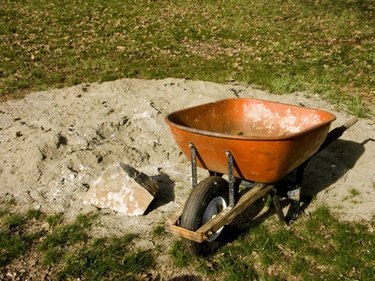
Sand is useful for drainage. The lighter, coarser texture of the sand helps water move through the soil more quickly and can help a landscaper or homeowner prevent landscaping problems such as water standing in the yard. Use the proper mix of sand and soil to make your gardening efforts more successful.
Coarseness
Video of the Day
In technical terms, sand is defined by the diameter of its individual grains. Sand is made of very small particles of stone, and when these particles range from between 1/16 and 2 millimeters, the resulting material is classified as sand. If the particles are bigger, it is classified as gravel; if they are smaller, the material is silt.
Video of the Day
Sand can be further categorized based on particle size. Coarse sand has larger grains, ranging from 1 to 2 millimeters. Medium sand has mid-size grains that range from ¼ to ½ millimeter. Fine-grain sand is from 1/8 to ¼ millimeter in size. Depending on your drainage needs, you may select different sand grades since water will drain faster through a coarser grain. You can also mix sand with other materials to create different effects.
Sand and Clay
You can improve the drainage of clay soils by adding sand, but if you don't add enough sand, you risk of turning your soil into a cement-like substance that is impossible to work with when you try to garden or grow anything. To improve the drainage of a heavy clay soil by adding sand, add half as much sand as clay. So. to improve the drainage of the top 4 inches of a clay soil, for example, spread a 2-inch thick layer of sand over it and then work in the sand using a rototiller.
Sand and Gravel
Using sand and gravel together is a common practice when it comes to building a drainage system into a lawn or garden. In such cases, you install an underground drain beneath the lawn or garden at its lowest point, and lay pipes to carry water to the drain. To improve the drainage around the pipes, gardeners or landscapers often use a combination of sand and gravel to fill the trench the pipe is in before covering the trench with soil or turf.